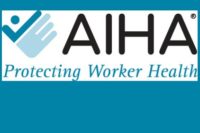The EPA, cabinet members and a host of federal agencies – all part of the President’s Task Force on Environmental Health Risks and Safety Risks to Children -- gathered last week to hear the agency's strategy for reducing childhood lead exposure and associated health risks.
EPA Administrator Scott Pruitt outlined a collaborative multi-federal agency that synced with plans to make it a priority for EPA’s 2018 agenda.
Attendees agreed to:
- Make addressing childhood lead exposure a priority for Task Force departments and agencies;
- Five goals that frame the new Federal Strategy to Reduce Childhood Lead Exposures and Eliminate Associated Health Impacts;
- Set an aggressive, near-term timeline for the Task Force to complete its work to draft the strategy; and,
- Schedule a follow-up principals meeting or event to issue the federal strategy and discuss next steps.
“Reducing lead exposure for children and addressing the associated health impacts of exposure is a top priority at HHS, and across the Executive Branch,” said Health and Human Services Secretary Alex Azar “We are fully committed to drafting a federal strategy to fight this continuing threat to infants and children.”
“Far too many Americans are exposed to lead in their workplace,” said Labor Secretary Alexander Acosta. “Finding solutions to better protect these workers and minimize the amount of lead that is taken home, and potentially exposed to their children, is a priority.”
Representatives from the following agencies or offices attended:
- U.S. Department of Health and Human Services
- U.S. Department of Housing and Urban Development
- U.S. Department of Labor
- U.S. Department of Agriculture
- U.S. Department of Education
- U.S. Department of Justice
- U.S. Department of Homeland Security
- U.S. Consumer Product Safety Commission
- Office of Management and Budget
- Office of Science and Technology Policy
- Council on Economic Advisers
- Council for Environmental Quality
Background on President’s Task Force and the challenges of childhood lead exposure:
Source: The EPA
Since the 1970s, EPA and other federal agencies have spearheaded and implemented many actions resulting in a significant reduction of lead exposure throughout our country. However, lead exposure, particularly at higher doses, continues to pose a significant health and safety threat to children, preventing them from reaching the fullest potential of their health, their intellect, and their future. No blood lead level is safe for children. The time is now to impact future generations. EPA and our federal partners are committed to collaborate to address this threat, and improve health outcomes for our nation’s most vulnerable citizens – our children.
The President’s Task Force on Environmental Health Risks and Safety Risks to Children, which was established in 1997 by Executive Order 13045, is well positioned to take a leading role to address this problem. In 2000, the Task Force issued its first national strategy to address the childhood lead exposure. That first strategy focused primarily on expanding efforts to correct lead paint hazards (especially in low income housing) and put forward recommendations aimed at eliminating childhood lead exposure in the United States as a major public health problem by the year 2010.
Now, however, tackling the problem at this stage requires a coordinated federal-wide effort that evaluates the predominant sources of lead and also includes improving identification and treatment of children identified as lead exposed. It requires a more robust and coordinated communication with parents and others regarding the risks and methods to reduce exposure and a collaborative multi-agency research plan. To this end, the Task Force has been working on a new draft federal strategy that seeks to identify opportunities, including the 58 federal programs currently working on the issue.








